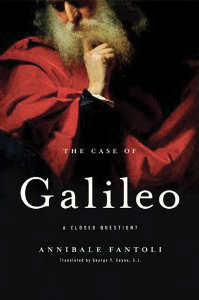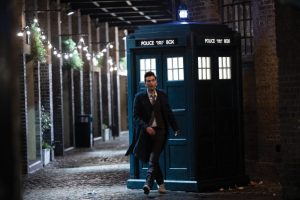The Case of Galileo: A Closed Question?
By Annibale Fantoli (Notre Dame Press, 2012)
 Annibale Fantoli’s The Case of Galileo: A Closed Question? opens where most Galileo books end—with the aging, nearly blind astronomer kneeling before a panel of seven cardinals as they pronounce him “vehemently suspected of heresy, namely. . . that the sun is the center of the world.” Four centuries later, this scene seems absurd. Lay scholars and church hierarchy disagree about many things, but the earth revolving around the sun is not one of them.
Annibale Fantoli’s The Case of Galileo: A Closed Question? opens where most Galileo books end—with the aging, nearly blind astronomer kneeling before a panel of seven cardinals as they pronounce him “vehemently suspected of heresy, namely. . . that the sun is the center of the world.” Four centuries later, this scene seems absurd. Lay scholars and church hierarchy disagree about many things, but the earth revolving around the sun is not one of them.
For readers with a desire to uncover more than the familiar, but inaccurate, narrative of the Galileo case as one of science versus faith, Fantoli thoroughly examines the exact issues Galileo, his allies, and his critics confronted. They debated whether the Bible was being literal when it reported that Joshua stopped the sun. Several Jesuit scientists, historically considered Galileo’s most aggressive adversaries, agreed that Galileo’s observations discredited older understandings of planetary motion but disagreed with his new conclusions. The ongoing debate even stressed the already tense relationship between Urban VIII, initially one of Galileo’s allies, and several cardinals antagonistic to the pope.
Fantoli’s work then innovatively explores what he calls “the burdensome inheritance of the Galileo affair.” More than three centuries after Galileo’s condemnation, Pope John Paul II formed a commission to investigate and publish a complete and conclusive report on the Galileo case. Though many individuals on this commission produced new scholarship, Fantoli himself found the final papal report disappointing.
Readers can decide for themselves what a satisfying conclusion to the Galileo case might be, but using Fantoli’s thoughtful, careful evidence as a guide, they have to agree that even in the 21st century, the Galileo case will remain an open question for a long time to come.
This article appeared in the July 2012 issue of U.S. Catholic (Vol. 77, No. 7, page 43).













Add comment